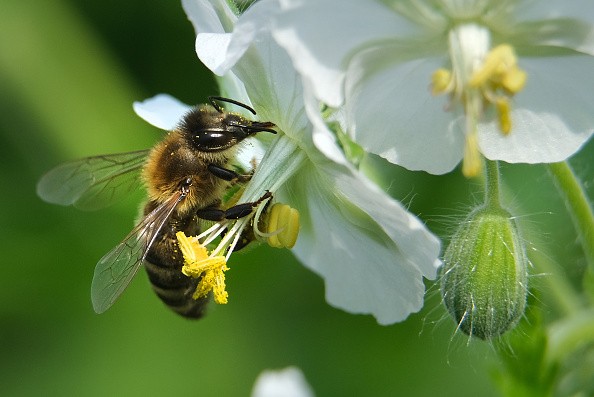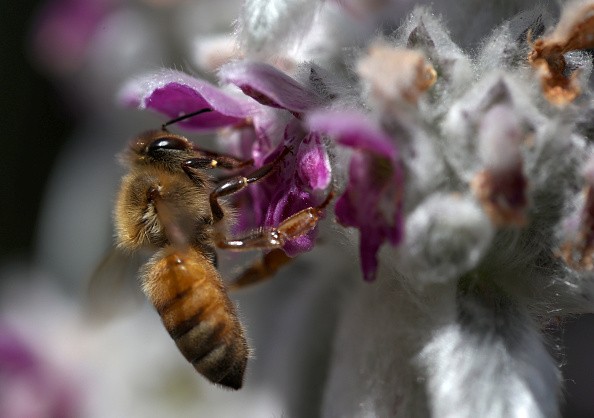Scientists found a new way that will help monitor airborne plastic particles. But do they cause harm to bees?

Airborne Microplastics
As honeybees find their way through the world, they are perfectly suited to take up pieces and bits of it on the way. Their bodies are covered with hairs that have developed to hold small particles that the bee collects purposely or simply come across in its daily travels. These bee hairs become electrostatically charged in flight, which helps in attracting the particles.
Pollen is the most pronounced substance that gets trapped in these hairs, as well as wax, plant debris, and even pieces of other bees. Now, additional material has been placed on that list: plastics. Particularly, 13 distinct synthetic polymers, according to a study of microplastics and honeybees in Denmark.
Earlier this year in Science of the Total Environment the study was published. It's well accepted that microplastics are vastly spread all over the planet. Yet experts are still getting the knowledge on how they move through the atmosphere. Sampling them is not easy and nearly all research of airborne microplastics till today has been carried out at ground level, scientists say.
Interactions of Bees With Plastics
It becomes known that honeybees - and all those hairy bodies and legs - gives them a feasible means for assessing the windborne plastic fibers and fragments distribution better. All thanks to their abundant numbers and wide-ranging grazing, honeybees can be selected as living probes of how microplastics are dispersed all over the world.
The scientists said: "This work for the first time demonstrates the likeliness of making use of honeybees as a bioindicator for the existence of MPs (microplastics) in the environment. "Scientists have made use of bees as pollution sentinels, tracking heavy metals, air pollution, pesticides, and also radioactive fallout for decades.
But study into the interactions of bees with plastics, which also dates to the 1970s, has concentrated on macro plastics more than micro. Leafcutter bees, for instance, which are nearly the same size as European honeybees but unsociable and seen all over the world, have been revealed to use their big mandibles to cut pieces that are half-moon-shaped out of plastic, just as they do from petals and leaves.

Leafcutter Bees
Scientists in Canada, Argentina, Chile, and the United States have noticed leafcutter bees taking such bits from packaging, bags, and other plastic materials and assembling their nests with them. In the United States U.S., a study proposed that the bees also slice nesting material from plastic flagging which is used for marking construction or surveying sites.
In the Denmark study, researchers collected thousands of female worker bees, from 19 apiaries - 10 in suburban and rural regions beyond the city and 9 in the center of Copenhagen. They collected bees straight inside their hives in the spring, when the building up of colonies was occurring. Due to the fact that bees interact with water, plants, soil, and air - all areas where microplastics stockpile - they had great chances to encounter plastics.
Related Article : 44 Percent of Bees' Colonies in the United State Gone Over the Last Year
For more news, updates about bees and similar topics don't forget to follow Nature World News!
© 2025 NatureWorldNews.com All rights reserved. Do not reproduce without permission.





